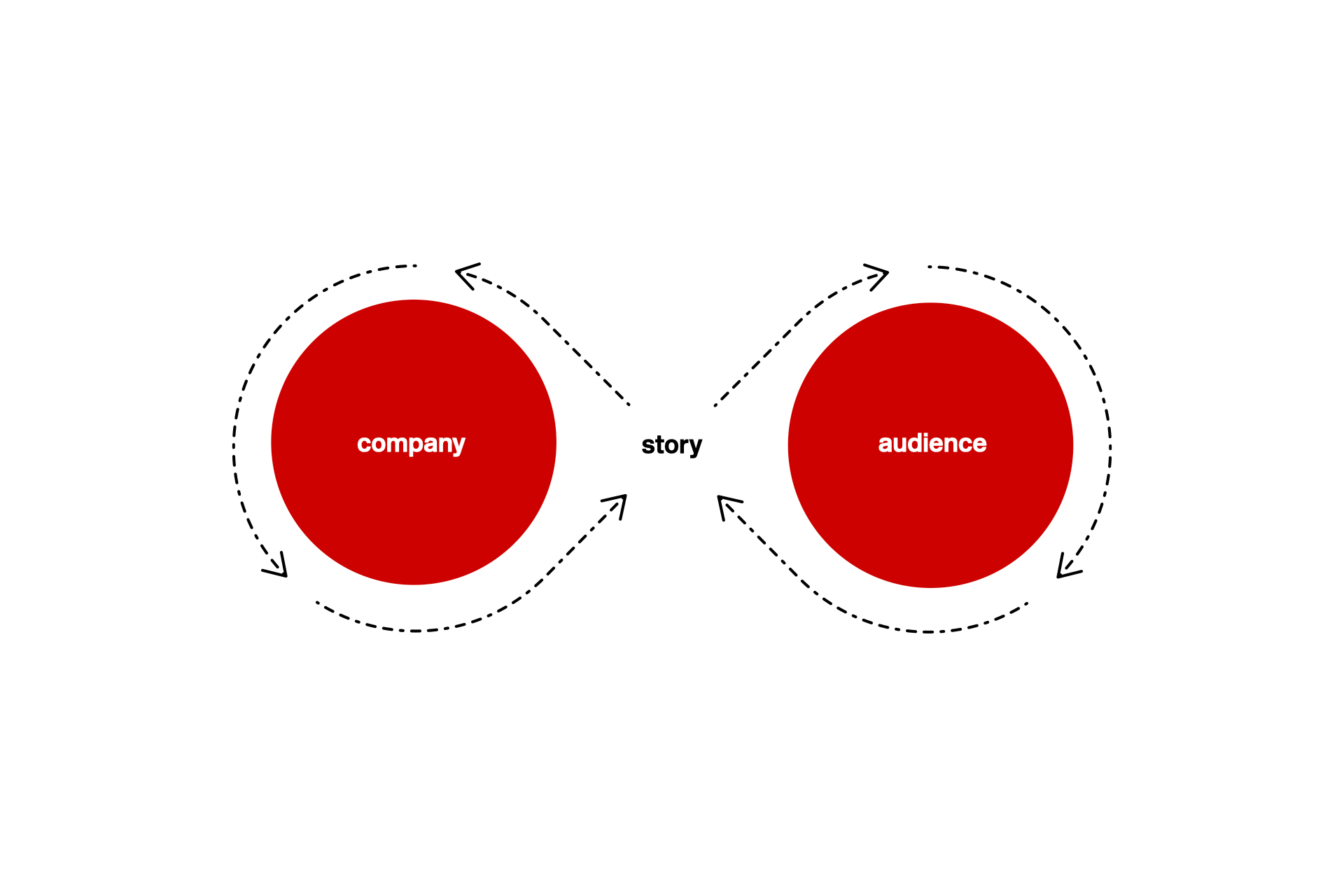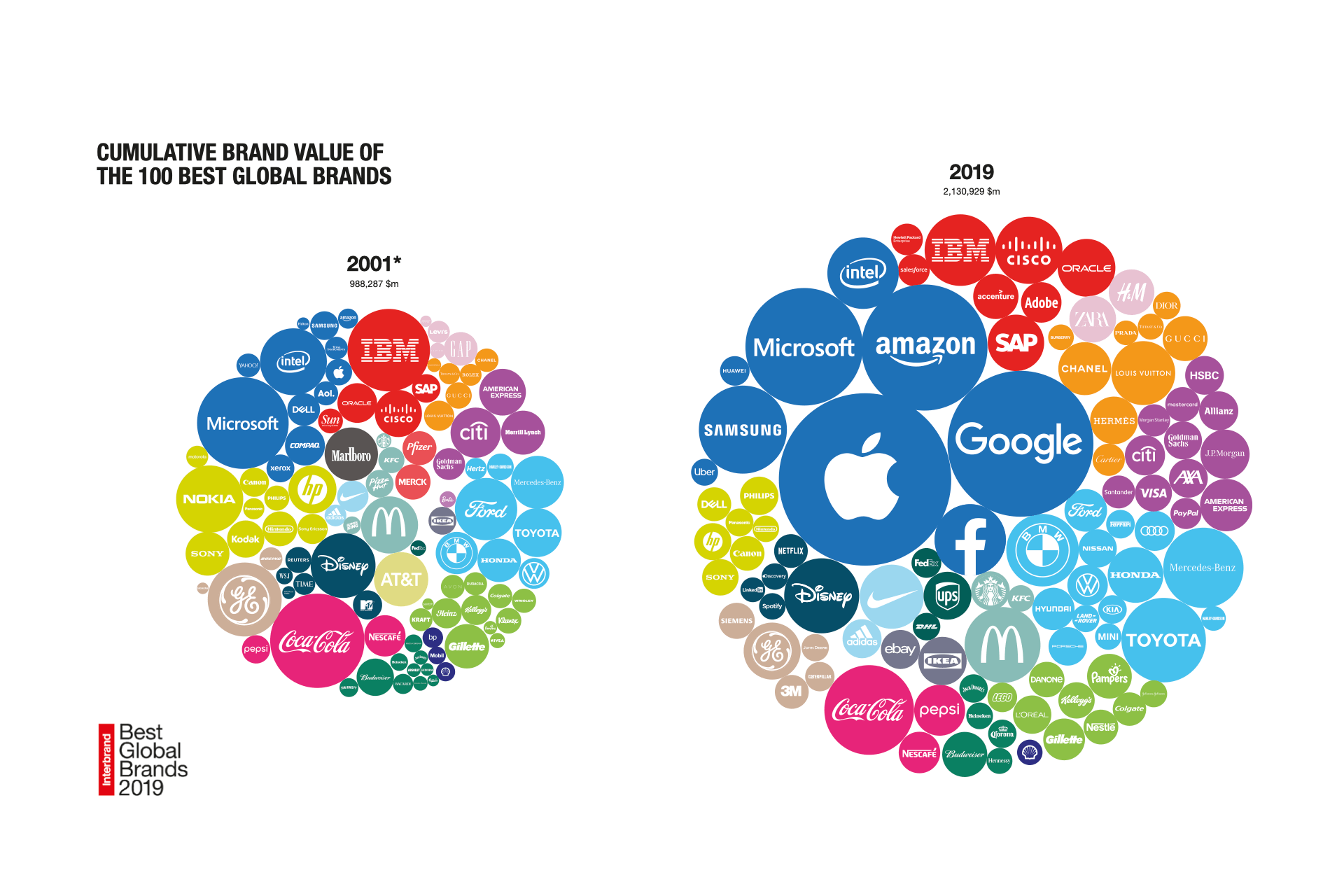The Brand with Two Faces
A critical reflection on the duality of brand stories

January owes its name to Janus, the Roman deity of "beginnings, transitions, time, duality, doorways, passages, frames, and endings". It marks the start of a new cycle. A good time for reflection, contemplation and incubation of new ideas, focusing on new priorities and what needs to change.
In January 2021, we are in a particularly delicate transition. We face a climate emergency posing an existential risk, a global pandemic, an economic downturn and various connected socio-political events. Our collective stories are growing in tension and uncertainty.
In times of crisis, we often need to go back to first principles and re-organise for the future. We change, as does the world around us: two valid reasons to review our brand strategy and how we tell our stories. Clarity and alignment in the organisation are critical factors for people to deliver coherent and meaningful outcomes.
This is what I do for a living. I help companies tell the story of what they do and why it matters.
Words, Stories and Brands
According to my profile, I am a Brand and Creative Leadership Consultant. What does that mean? Using terms like Brand, Strategy, Design, or Consultant can be problematic. These words are so widely used and misused. They are ambiguous at best.
We tend to label people, and often those labels stick. I was a designer, a creative director, a TV identity specialist. Over the years, I felt the need to question the briefs I was given, to the point that I started writing them. I became a strategist, a brand builder, although I never stopped being a designer. Bruno Munari once wrote: “A designer is a planner with an aesthetic sense.”
What is a brand? Silly question, right? We live in a society where brands occupy the place once reserved for deities. Brands are everywhere. They dominate culture, claim our attention; we may use them to define who we are as people. In modern capitalism, brands are immaterial assets representing enormous value.

The value of a brand is tied to the meaning people attach to it. This is challenging for brand owners because their asset’s value is not entirely in their control; it depends on other people's meaning-making activities. It also has implications for everyone else, since people tend to gravitate towards brands which appear to reflect who we are.
To be a brand builder is humbling because we recognise the power is not in our hands. We strive to help brand owners achieve a high level of clarity — of intent, message and behaviour. This helps generate internal alignment, which is necessary for creating coherent experiences for those who are ultimately giving the brand its value — people making associations and meaning in their own heads.
Much confusion in brand management comes from using the same word to mean one part rather than the whole. Obviously (at least for those who work with brands), the brand is not the branding (the logo or the identity), the product or the style. It is definitely not the advertising message. Ultimately a brand is not what we — the brand owners or their consultants — say it is. It is what people make of it. I define ‘brand' holistically as:
The story that connects a company's activities to people's lives.
Building brands requires attending to each side of the story, closing the gap between identity and reputation.
Like the Janus Bifrons, brands have two faces: one looking to the past and one to the future. One looking in and one looking out. The company presents the face it wants the world to see, and the people looking into the brand make their own associations and ideas of what the brand represents.
The internal story (looking out).
The internal story has a protagonist (the customer), an inciting incident (the problem they face) and a quest towards a goal (the solution to the problem, the value the company or product adds to people’s lives).
Every enterprise needs to define and communicate their goal (the North Star or Purpose) — a vision of the lasting value they add to the world. If they don't, they will lose relevance and the ability to innovate. The vision of the north star drives the company’s quest. It attracts people to work there and inspires their actions as they fight to overcome obstacles to achieve the goal.
The internal story shapes what we may call the brand's identity — how the company presents itself.
The external story (looking in)
The external story manifests what we may call the brand's image or reputation — what people think of the brand — through associations consumers form and hold in memory.
Every encounter with the brand — whether using a product, seeing an ad, meeting a salesperson, or talking to customer service — produces new associations. The external story is the one that emerges in people's minds as they experience every action the company takes.
It is what we do, not what we say, that builds the brand. Do it first, then communicate it [[1]]
Don't start with Why, start with People.
You may have noticed that I wrote the customer is the protagonist. It’s a common misconception to place the product, or the company — its people or founders — at the heart of the internal story. But in doing so, we confuse the company story with the brand story. It is a crucial difference because other people may or may not care about our company. But they will always relate to a story about themselves.
People are the characters in the story. Their motivations move the story forward. Brand Strategy requires a deep understanding of people and their goals across every aspect of the business, internally and externally.
The internal brand can be defined as a set of core principles that help people make decisions on the ground. The external brand is the outcome of experiences customers, and other stakeholders have with a company — shaped by its people’s actions and behaviours. The two strands of the story connect at the experience touch-points.
The story must resonate with different audiences: colleagues, customers, prospects and non-customers, partners, investors, the media. It spans business strategy, culture and marketing. Its core components (Positioning, Promise, Personality and Purpose) have different functions: (Corporate) Purpose and Personality are messages primarily intended for the internal audience, to motivate and inform their actions and behaviours. They concern the business strategy and are the focus of the internal story. Positioning and (Customer) Promise need to reach and motivate the external audience, informing the marketing strategy and the external story.
The story resonates when all its parts work as one. Business strategy and brand strategy do not exist in separate silos. To paraphrase renowned investor Ben Horowitz, the (brand) story is the (business) strategy.
The story is the strategy. Culture delivers it.
Defining and telling the story is critical, but implementing it effectively even more so. In Sapiens, Yuval Harari wrote:
“Much of history revolves around this question: how does one convince millions of people to believe particular stories about gods, or nations, or companies? [Stories] give Sapiens immense power, because they enable millions of strangers to cooperate and work towards common goals”
Harari points out that telling stories is the easy bit. The difficult part is to make people believe them and change behaviour. To do so, we need to work with culture.
A company's culture is often defined as 'the way we do things around here'. Culture happens, whether deliberately or not. It evolves from what people value, how they work together, how they behave. Stories, symbols, routines and rituals, organisational structures, power and control systems are among key factors which shape culture.
A brand story comes to life when everyone is aligned around the common goal, the things they value as a company, the way they do business and how they behave every day. This is why organisational culture is a vital component of the brand.
Successful brand management attends to alignment, culture and coherent actions before communication.

Creating Value
The brand is the story that links a company’s activity to people's lives. Brand owners envision and enact their story in terms of their goals and aspirations. Their actions — products, services and communications — create value and experiences for people. The brand narrative thus emerges in the minds of those who experience the brand’s actions and messages. Brand value is created or destroyed in the exchange.
People build a positive story of the brand as long as their experiences satisfy real needs and enhance the quality of their lives. The brand has two faces, but it only has value as a whole. The brand value may be measured in financial terms, but that’s only one aspect of it.

A holistic brand management approach recognises the role of customers and consumers in building the brand. It encourages brand owners to focus on doing things (that support the story they would like people to tell) rather than merely saying things (telling the story). A brand narrative results from an ongoing dialogue between a company and its customers, potential customers and other stakeholders.
Companies must exercise some control over their brands if their narratives are to become meaningful and scaleable, but, at the same time, they must acknowledge that brands are outcomes of experiences which live as stories in the minds of the receiver. In a fragmented media world, these stories—attributes, perceptions and narratives—can not be controlled: they can only be nurtured.
Brand owners cannot fully control the interaction, but plant the seeds for the creation of brand value, establishing a ‘platform for action’ enabling consumers to interact productively. The brand narrative provides generative principles, underpinning decision making, actions and behaviours, enabling other people to build meaning in autonomous ways. By interacting with the brand and contributing to its story, consumers are also deriving social value as they use the brand to support their own identity narratives. The social and human value of brands merits significant further investigation.
This is what I do. Brand stories matter, because people matter. Words matter and actions matter more. Value matters. Culture matters. Every organisation or enterprise needs to align its story and its actions to create value and realise its vision for bringing it to the world. By recognising the duality of brand narratives, we give everyone a good story to tell.
Federico Gaggio works with leaders and teams to develop the brand story holistically and bring it to life through creative leadership. He can be found at Do&Co, often collaborating with Pentagram, and other polymaths.
The ideas in this article are further explored in his MBA master thesis at the Berlin School of Creative Leadership “Decoding Brand Narratives: What is the relationship between the brand story and the value companies create?”
[[1]]: This may have something to do with company name, Do&Co.




